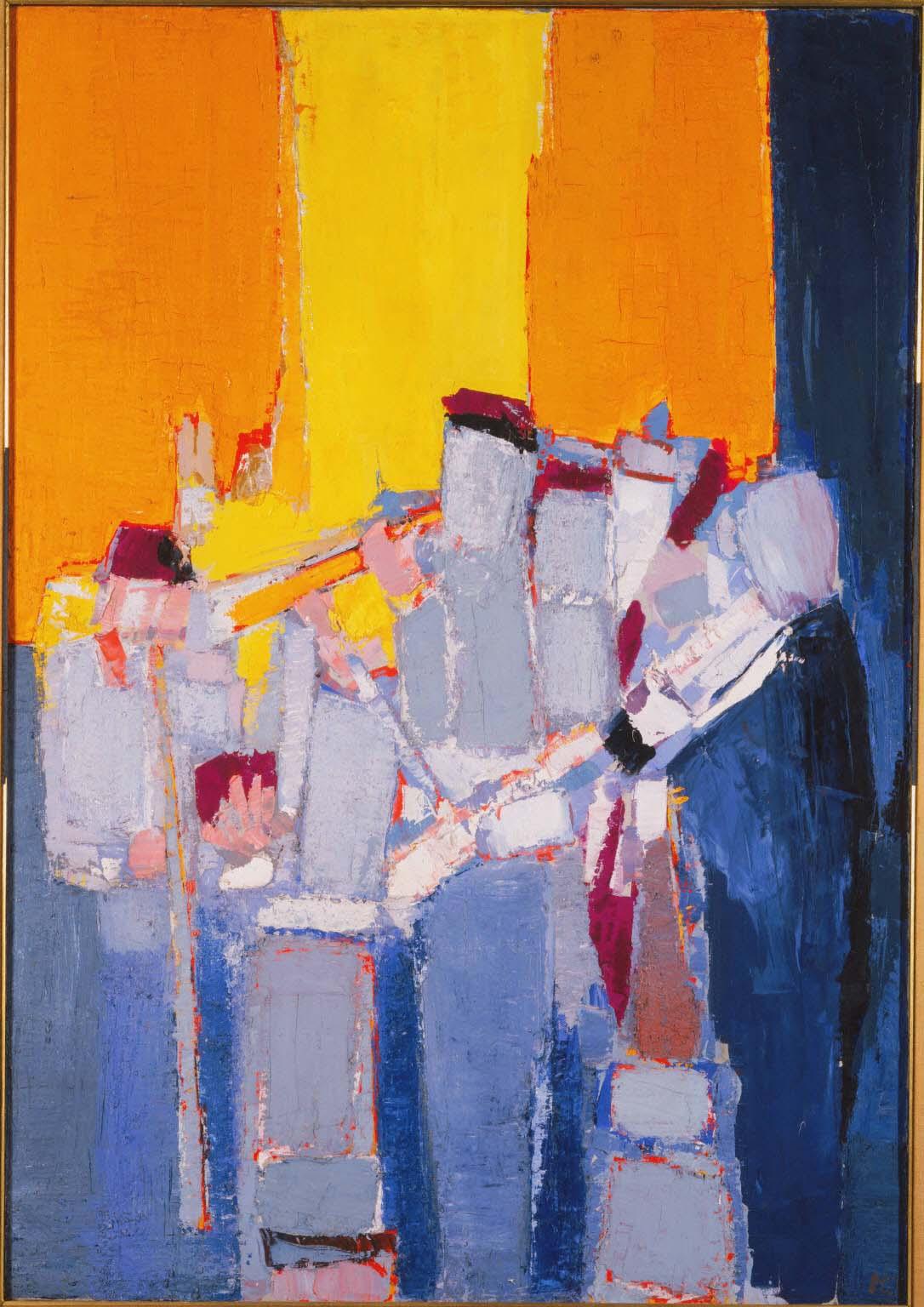Musicians
Nicolas de Staël ( 1953 )

Derived from a concert by the jazz musician Sidney Bechet at a club in Montparnasse, Musicians is among de Staël’s most specific in terms of inspiration, which even extended to the title of the first version: The Musicians, in Memory of Sidney Bechet, 1953. De Staël’s dealer, Paul Rosenberg, was so enamored of this painting that he convinced the artist to paint the work now in the Phillips. Although the layout of the composition is nearly identical in both paintings, the colors vary in intensity. In the Phillips painting, de Staël added as the final layer many subtle shades of gray on top of the same brilliant orange-red, blue, and navy hues that he used in the first version. This is evident, for example, in the wind instrument held by the musician on the left, as well as the bodies and faces of the musicians in the center. Moreover, the intense areas of red and yellow behind the figures in the first version has been changed to tones of orange and yellow. The whole effect is more muted, softer.
This was not the only occasion that de Staël was inspired by music. He frequented concerts and listened to music while painting. After a memorable concert he stated: “Horowitz last night…what an incredible phenomenon: at one point I thought the piano would hit the ceiling.” And just two days before his death, he traveled to Paris to hear concerts of compositions by Anton Webern and Arnold Schönberg, which inspired subsequent works by de Stael, where the only focus is on the music and the instruments, and not the players.
It was in mid-1952 that de Staël began to shift toward a more intensely chromatic palette and choose subjects more closely affixed to their sources in the visible world. His new palette and specificity of subjects stemmed from his visit in March to a soccer match at the Parc de Princes. “Between sky and earth, on grass that is either red or blue,” he wrote to the poet René Char, “there whirls a ton of muscle in complete disregard for self with, against all sensibilities, a great sense of presence. What joy! René, what joy!” The Mediterranean light was another source for de Staël’s burgeoning chromatic interests. In the summer of 1952 he revisited the south of France for the first time since his youth. “The light here is simply dazzling,” he wrote to Jacques Dubourg, adding in another letter, “I consume the color in quantity.” Also that month, he wrote, “By dint of burning one’s retina on the ‘shattering blue,’ as Char puts it, one ends up seeing the sea red and the sand violet.” Phillips appreciated this aspect of Musicians, stating that it seemed to be “like a brilliant street scene with the shadowed blue band playing their instruments under a sunlit canopy of orange and yellow….”
The Phillips Musicians retains the thick encrusted style characteristic of de Staël’s previous work, such as Fugue and Le Parc de Sceaux. As Eliza Rathbone notes: “The roughness and intense physicality of the painted surface attests to a tangible sense of the artist’s involvement with as much immediacy as the gesture….” But in terms of its color, Musicians heralds his fluidly painted, chromatically intense late work.